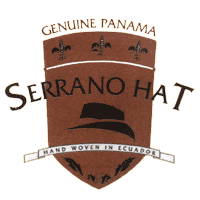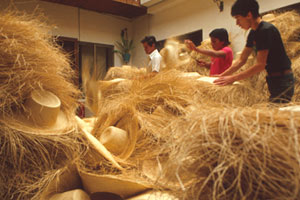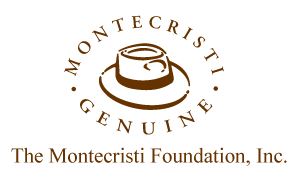
A Short History of the Panama Hat
- Why Is a Hat from Ecuador Called a Panama Hat?
- Panama Hat Weaving in Ecuador—A Tale of Two Cities
- The Panama Hat—Fashion Phenomenon
- The Fall from Fashion Favor
- Myths, Legends, and Lore of the Panama Hat
1. Why Is a Hat from Ecuador Called a “Panama” Hat?
|
You’ve probably heard the old saying that the three most important factors in retail success are location, location, and location. Now imagine your location is Ecuador in the mid-1800’s. You have straw hats you want to sell. It doesn’t take long to notice that Ecuador is not a very busy corner. Not much walk-by traffic. Even today, Ecuador is not a major tourist or commercial destination. Nor does it have a lot of people passing through on their way to somewhere else. So you scratch your head and try to figure out how you’re going to find customers for your hats. You look at a map and notice that just a few hundred miles north, a relatively short boat trip away, is Panama. In the 1800’s Panama was part of what is now Colombia. Then, Colombia was called New Granada. Unlike Ecuador, Panama is a very busy corner, with lots of walk-by traffic. Panama is the narrowest point of land separating the Atlantic and the Pacific Oceans anywhere from the Arctic Circle to the southern tip of South America. |
|
|
Before air travel, anyone on the East Coast of Canada or the U.S. who wanted to go to the West Coast (or vice versa) had three choices: (1) travel overland, (2) take a ship around the tip of South America, (3) take a ship to Panama, cut across the isthmus, and get another ship on the other side. Option number three was the fastest, and probably the least hazardous, of the choices. So, clever businessperson that you are, you take your hats to Panama to sell them. People like your hats. There is a reasonable amount of traffic. Business is good. Then gold is discovered in California and the number of people passing through Panama explodes exponentially. You say the 1849 equivalent of “Woo-hoo!” Business is very good. Your strong, lightweight, attractive, straw hats are much in demand. They are perfect for deflecting the tropical sun of Panama, just the thing for those long days many are about to spend outdoors in sunny California getting rich panning for gold, and they’re even nice to have on a summer day in Philadelphia or Boston. |
|
|
People on their way to the gold fields buy your hats. People returning home from the gold fields buy your hats. And when your customers arrive at their destinations, an oft-heard comment is “Nice hat. Where’d you get it?” The response is, of course, “Panama.” You neglected to put Made in Ecuador stickers inside all the hats, so the inevitable result is that the hats are called “Panama” hats. Great. Ecuador’s most famous export is called a “Panama” hat. People in Ecuador hate that. |
|
   |
A second major contributor to the misnomer was the Panama Canal. Canal workers often wore the hats, which showed up pretty well in black-and-white news photos of the day. One photo, made on November 16, 1906, is often credited as the origin of both the name and the fashion. The photograph showed President Theodore Roosevelt wearing a black-banded straw hat as he sat at the controls of a ninety-five-ton Bucyrus steam shovel during a three-day inspection tour of the Panama Canal excavation. The picture was widely published in the U.S., and around the world, prompting much comment on the President’s “Panama” hat. |
|
Other accounts give part of the credit to ship passengers going through the canal, a love affair, and a revolution. Which is the “true” explanation? They are all true. And no doubt each is at least partly why a hat from Ecuador is called a Panama hat. |
|
2. Panama Hat Weaving in Ecuador—A Tale of Two Cities
     The Tomebamba River runs through the lovely colonial city of Cuenca. On most days local women do the family laundry along the river banks. © B. Brent Black |
Montecristi and Cuenca (kwayn-ka) are the two cities. They are the two primary centers of Panama hat production and export in Ecuador. Montecristi is on the coast. Cuenca is in the Andes Mountains. Better hats come from Montecristi. More hats come from Cuenca. When Francisco Pizarro and his Spanish conquistadors arrived in what is now Ecuador in 1526, inhabitants of the coastal areas were already wearing a curious type of headwear made of woven straw. Indeed, ceramic figures dating back to 4000 B.C. appear to be wearing a similar style of headwear.
|
    |
Beginning in the early to mid-1600’s hat weaving evolved as a cottage industry all along the Ecuadorian coast. Hat weaving and wearing grew steadily in Ecuador through the 17th and 18th centuries. Even then, the best quality hats were being made in what is now the province of Manabí (mahn-ah-bee). The Manabí towns of Montecristi and Jipijapa (hee-pee-ha-pa) gained pre-eminence as the leading centers of the emerging hat industry. Hats woven there gained a reputation for being better quality, finer, than hats woven elsewhere. “Montecristis” and “Jipijapas,” as the hats were sometimes called, were increasingly more sought after than hats with lesser provenance. PHOTO LEFT: The Catholic church in Montecristi is its most prominent landmark. The statue is of Eloy Alfaro, native son of Montecristi, first elected President of Ecuador, and a major player in establishing Montecristi as the place “Panama” hats come from. © B. Brent Black |
|
To this day, in Yucatan State of Mexico, which has developed its own thriving Panama hat industry, hats woven of toquilla straw are more often called “jipijapas” than Panamas. No one I spoke with knew that the name had originated from the small town in Manabí Province, Ecuador. To the south of Yucatan, in Belize, a young boy offered me some small baskets woven of a kind of straw that looked surprisingly familiar. I asked what the baskets were made of. He answered “Cheepeechoppa.” No doubt this was a corruption of jipijapa. |
     
Jipijapa Town Hall in 1912 |
|
Two events occurred in the 1830’s that would change Ecuador’s hat industry forever. In 1835, Manuel Alfaro emigrated from Spain to Ecuador. He settled in Montecristi and launched himself in the hat business. He organized production better than anyone had previously by developing a large network of weavers and other artisans necessary to the making and finishing of the hats, and by creating a smooth-flowing production system. His goal—export. Soon, his hats were leaving the port cities of Guayaquil and Manta, bound for Panama. He established a company in Panama that traded in hats, cacao, and pearls. As noted in the previous section, he had chosen his location well and fortune favored him with the California gold rush, which dramatically increased traffic in Panama as well as demand for his hats. Alfaro sold his hats in Panama and exported them from Panama to other countries, especially the United States. |
|
By 1850, the U.S. had developed quite an appetite for woven straw hats from Ecuador/Panama, buying two hundred twenty thousand of them per year. Alfaro’s son, Eloy, entered the family business and guided it to even greater heights. As noted in The Panama Hat Trail, by Tom Miller © National Geographic, Eloy Alfaro used proceeds from hat sales to help finance the Great Liberal Revolution in Ecuador. The revolution was a success and Eloy Alfaro was twice appointed President of Ecuador. Naturally, others besides Alfaro helped to expand hat production in Manabí and elsewhere along the coast to meet the ever-growing demand. |
     
A family of weavers in Montecristi, 1912 |
|
In 1836, Cuenca declared itself in the hat business. Officials there decided to open a hat factory in order to boost the local economy by capturing a share of the rapidly increasing export market. Within a few years, their workshop was making hats and training anyone who was willing to learn. In 1845, Don Bartolome Serrano dramatically speeded up the development of the Cuenca hat industry by taking a more comprehensive approach to the task at hand. He went to the coast and set up straw supply lines from the largest toquilla-growing areas. He bought thousands of wooden hat forms, all the tools of the trade, bleaching powder, even weavers. He hired master weavers from Manabí and brought them to Cuenca. Serrano and others in the Cuenca hat industry exercised their considerable political influence, and soon apprenticeship in hat making was compulsory throughout Azuay Province. Adults as well as children were required to learn the trade. Failure to do so could result in prison time. With this kind of “incentive,” the hat industry grew by leaps and bounds, by brims and crowns. Soon, hat making was one of the most profitable and powerful economic activities in the region. Some reports claim that there was no law that sent people to prison if they did not weave. They maintain that weavers were recruited from prisons and that was how the rumor started. |


Sorting hats at the old Ortega factory in Cuenca |
One of the largest exporters in Cuenca today is Serrano Hat. They say they are the same company that was started by Don Bartolome Serrano and are, therefore, the oldest hat company in Ecuador. Their competitors say they are not the same company, not the same Serranos, and not the oldest. As noted in the section Grades of Quality of Panama Hats the exporters in Cuenca do not agree on how to grade a Panama hat either. Nor will they work together for their mutual benefit, to protect and expand the Panama hat market overall. I have tried on several occasions to persuade the three largest exporters to unite around a common goal. No luck at all. Interestingly, each company claims to fully support the goal while assuring me that the other two will not support it. So, if they all support the goal, why will no one work to achieve it? My biggest problem with the Cuenca dealers is that they routinely sell Cuenca hats as “Montecristi” hats. The largest, K. Dorfzaun, agrees that the practice is wrong. But they all have to yield to European and US customer demands that they label the hats as “Montecristi” hats. If they do not do as asked, they will lose the order to a neighboring competitor who will. Even an exporter who wants to end the practice cannot. All of them are struggling to stay profitable. No one can risk losing business. |

|
I have been working to take the decision out of their hands. The Montecristi Foundation filed a formal legal action in Ecuador applying for Denomination of Origin status for “Montecristi” hats. I want “Montecristi” protected for hats as Bordeaux is protected for wines. The foundation filed the action on behalf of The Artisans Association of Montecristi. Our case has attracted the attention of the World Intellectual Property Organization, part of the UN, and the most important international group for these things. They sent an inspector to Montecristi to see how the hats are made and if they qualify for such protection. The inspector issued a favorable report supporting our application. |
|
The governmental agency in Ecuador that will make the decision is the IEPI. They also sent an inspector. A favorable ruling would mean that the Cuenca exporters can no longer sell Cuenca hats as Montecristi hats. If they want to sell Montecristi hats, they have to sell real Montecristi hats. That means they have to buy real Montecristi hats. All over Ecuador, street vendors and stores sell Cuenca hats with balsa boxes declaring the hat to be a Montecristi hat. There are more Cuenca hats sold every year that are falsely called Montecristi hats than there are real Montecristi hats sold. This is a primary reason why hat weaving is dying in Montecristi. I believe that if I can effectively end large scale misrepresentation of non-Montecristi hats as Montecristi hats, then the art can be saved. As long as the global market demand for Montecristi hats can be openly satisfied with cheaper counterfeits then the real art of Montecristi will continue to decline. If that market demand can be met only with real Montecristi hats, then demand for true Montecristi hats will increase dramatically. That’s the plan. We’ll see. |
|
   Cesar Vicuña and wife |
Okay, back to the history. Weavers in the town of Biblián, near Cuenca, developed their art to a higher degree than the other weavers of the region. Hats from Biblián actually began to rival those from Montecristi and Jipijapa for quality and fineness. In 1988, I went to Biblián to find Cesar Vicuña, a weaver mentioned in Tom Miller’s book, The Panama Hat Trail. I found Sr. Vicuña, Master Weaver of Biblián, beneath a tree sleeping off the joys of a substantial quantity of caña, a very raw local cane liquor. He seemed not to mind having his nap disturbed and guided me back to his house where I examined and purchased several of his hats. They were, indeed, as finely woven as any I had seen in Montecristi. The straw, however, had not been as well cared for and bleached. The hats were darker and less uniform in color than those from Montecristi. In comparison, they looked almost “dirty.” I took the hats back to Cuenca, hoping to find someone to finish them for me. They still had six-inch-long straw hanging from the unfinished brim edges. My two hats from Sr. Vicuña caused quite a stir in Cuenca. Their fineness of weave attracted a great deal of attention everywhere I showed them. |
|
TO BE CONTINUED…Sorry, the rest isn’t finished yet. I thought it would be better to let you read what is finished, rather than hold everything until I have time to do it all. BBB |
Coming soon (I hope)
3. The Panama Hat - Fashion Phenomenon
Text and photos © 1988-2025, B. Brent Black. All rights reserved.
100% Secure Shopping







 The almost brimless hats worn by 16th century Ecuadorians resembled a Spanish hat style of
the time called a toque. Consequently, the Spaniards in Ecuador began to refer to the straw
from which the hats were woven as
toquilla
straw, or
paja toquilla.
The almost brimless hats worn by 16th century Ecuadorians resembled a Spanish hat style of
the time called a toque. Consequently, the Spaniards in Ecuador began to refer to the straw
from which the hats were woven as
toquilla
straw, or
paja toquilla.












































